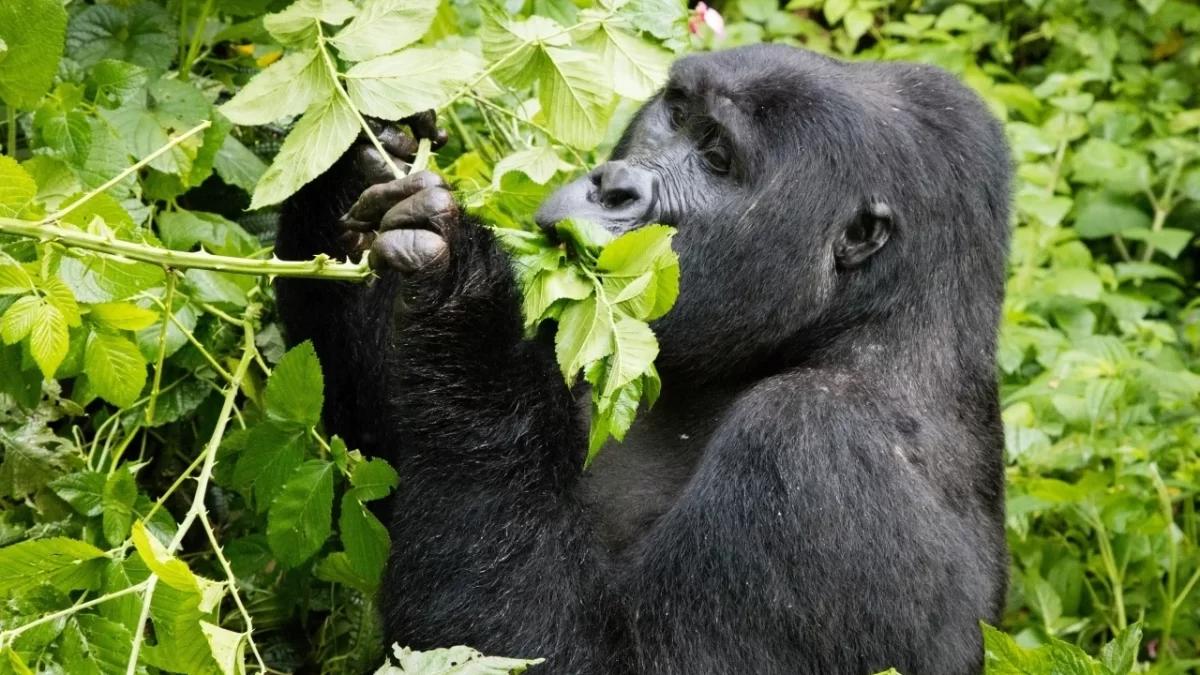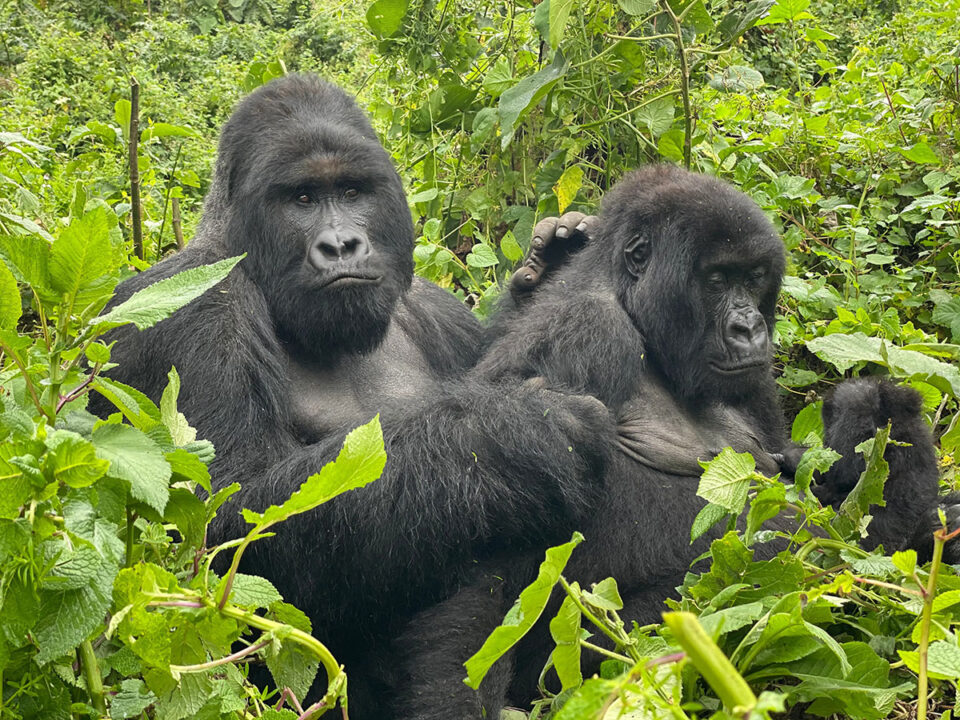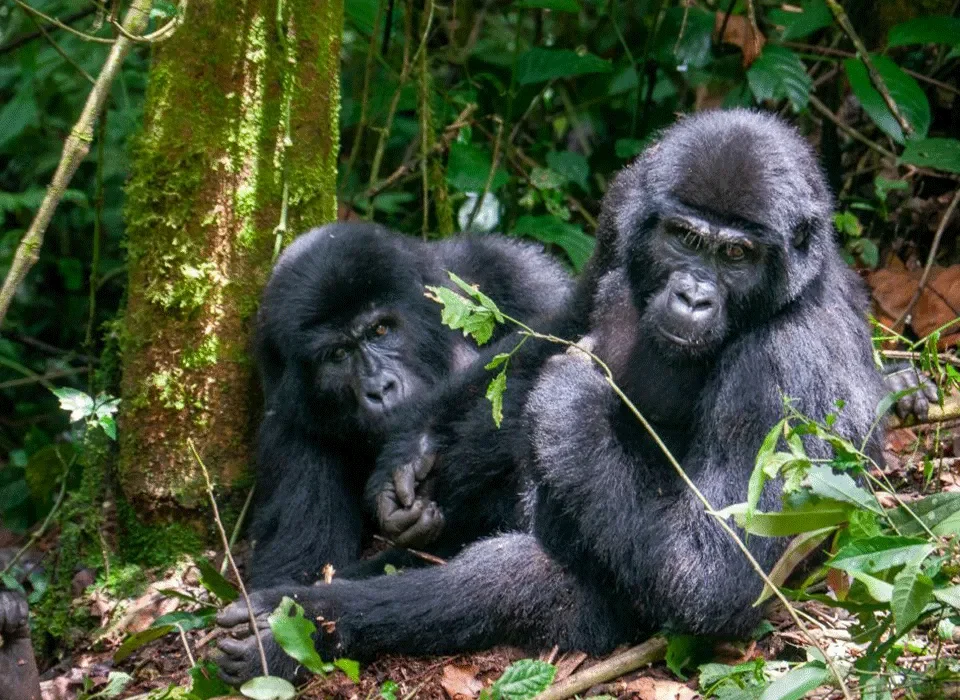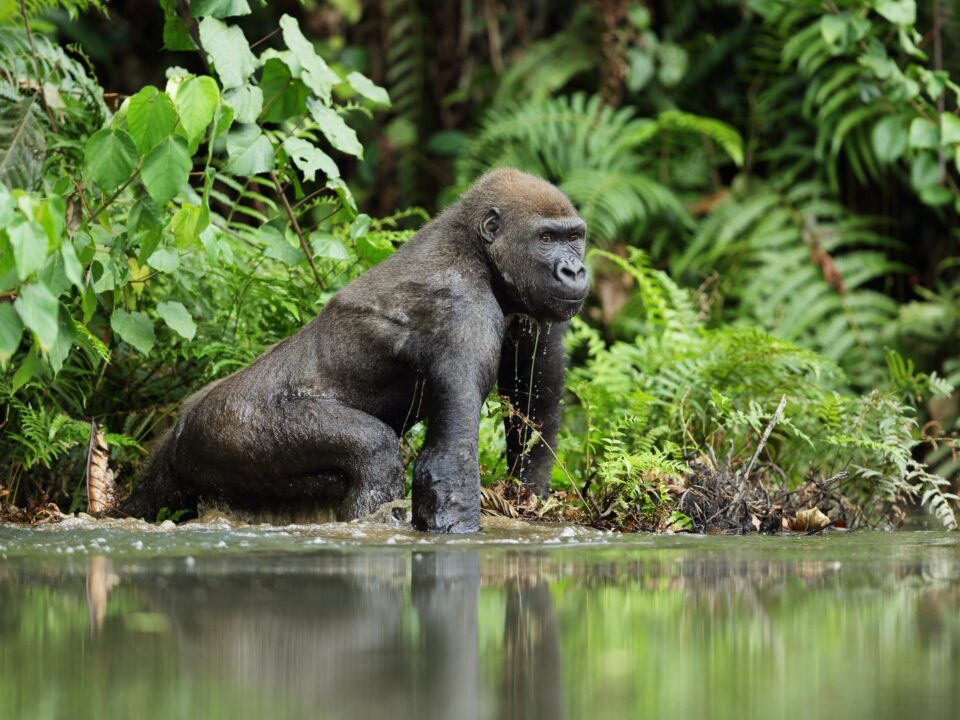How to Choose a Uganda Gorilla Trek?

Booking Gorilla Permits Worldwide
February 5, 2024
Best Time to Visit Kidepo Valley National Park
February 5, 2024How to Choose a Uganda Gorilla Trek? – Choosing the Ideal Uganda Gorilla Trek
How to Choose a Uganda Gorilla Trek? – If you’re in the midst of planning your Uganda Gorilla trek, this detailed blog post is designed to provide essential insights on what to expect, the best time to embark on this adventure, pricing considerations, and guidance on choosing a suitable safari company to organize your Gorilla tracking expedition in Africa.
How to Choose a Uganda Gorilla Trek?
The allure of Bwindi Impenetrable Forest conjures images of lush green mountains and mist-kissed landscapes, accompanied by the enchanting sounds of mysterious wildlife. For those fortunate, it may mean encountering some of the world’s rarest Gorilla families.
Bwindi Impenetrable Forest and Mgahinga Gorilla National Parks serve as the picturesque settings for Uganda’s renowned Gorilla Tracking. If a Uganda Gorilla tour isn’t already on your bucket list, it certainly should be.
Despite Uganda’s historical challenges, the country is currently on a trajectory of recovery, marked by increased stability, reduced threats of violence, and a resurgence in tourism that has significantly contributed to improved infrastructure.
Among Uganda’s prime attractions is the remote region harboring the country’s rare Mountain Gorilla families. While Gorilla safaris in Uganda may not be the most affordable or easiest trips, they unquestionably justify the time and expense.
What to Expect on a Ugandan Gorilla Tour?
Gorilla tracking safaris, though not guaranteed to spot Gorillas, are led by expert tour guides maximizing the chances of sightings. The day typically commences at a designated meeting point, with some treks starting directly from there, while others involve meeting further afield – the exact details are not always known in advance.
Tour groups undergo a briefing and often watch a video presented by the Ugandan Wildlife Authority ranger guide. This prepares them for the Gorilla trek, ensuring safety and understanding of expectations. Groups are intentionally kept small, typically with eight people, to ensure a manageable experience.
Ugandan Mountain Gorillas are organized into families residing in various parts of the forest. The trek typically follows one of these known Gorilla families through their habitual territories in the mountains. The group is accompanied by a ranger guide, skilled in locating the families, and armed guards for safety.
Locating a specific Gorilla family can take anywhere from one to five hours or longer, considering the mobility of Mountain Gorillas, who cover vast distances to meet their nutritional needs.
Key Points to Remember
Once the Gorilla family is found, visitors spend approximately an hour observing from a safe distance of seven meters. Prolonged observation could lead to agitation and potential danger. Visitors are strictly prohibited from eating near the Gorillas, and flash photography is not allowed.
By adhering to the rules, visitors can enjoy an hour of photography, observation, and interaction with the Gorillas. In some instances, Gorillas might approach visitors under the vigilant guidance of the ranger.
After the allotted hour, the ranger guide leads the group back to the meeting point, and visitors can return to their accommodations or engage in other activities for the day. It’s advisable to keep the day flexible in case the Gorilla trek takes longer than anticipated.
The trek, while moderately challenging, is manageable for most average hikers. During the rainy season, the trek may be less comfortable but still feasible.
Gorilla Trekking in Rwanda and Uganda
When considering how to choose a Uganda gorilla trek, visitors have two choices: Uganda and Rwanda. Uganda Gorilla trekking is often preferred due to permit prices.
Permit costs are higher in Rwanda, at USD 1500 per person per trek, compared to USD800 in Uganda. While Rwanda’s permit prices may seem steep, overall travel expenses to both countries balance out the cost difference.
Flying into Rwanda is convenient for trips to both countries. A straightforward car transfer of 2-3 hours takes visitors from Rwanda to Ruhengeri and then to Volcanoes National Park. To reach Uganda, a four-hour car ride with a border crossing to Bwindi Forest and Mgahinga Gorilla National Park is necessary.
Both countries offer equal chances to encounter rare Mountain Gorilla families. The trek experience is facilitated by trained trackers, with most families residing in Uganda. Both destinations provide a range of luxury and budget accommodations within the National Parks.
Uganda emerges as the preferred choice for a more comfortable trek, catering to personal preferences or physical needs. It’s also ideal for those incorporating Gorilla trekking into a broader excursion, with well-organized logistics requiring minimal effort from visitors.
Best Country for Gorilla Treks
For an optimal adventure and safety during Gorilla safaris, Uganda stands out as the best choice. It not only offers stunning views and off-the-beaten-track National Parks but also provides a variety of accommodations.
Even during the high season, Uganda maintains a sense of exclusivity, providing a personal touch to the Gorilla trek. The country’s tourism landscape remains relatively undiscovered, ensuring a unique cultural experience and unforgettable stories.
While a Uganda Gorilla trek may incur costs, the opportunity to spend time with one of the world’s rarest primate species is a chance that should not be missed. It’s an unparalleled opportunity to meet endangered Mountain Gorillas in their natural habitat and create memories that few in the world will ever have the privilege to experience.
Gorilla Permit Requirements
Gorilla permits are essential, granting access to specific sections of the forest where various Gorilla families reside. Each permit is issued for a specific part of the forest and is valid for one day of the trek. Visitors with specific preferences for Gorilla families or forest areas should communicate their requests to the tour group or during the direct application process.
Gorilla permits in Uganda cost approximately USD800 per person per trek. During the high season, permits often sell out months in advance. Planning ahead is crucial for those intending to visit during peak times, but it offers smaller groups and easier permit acquisition. However, weather conditions, particularly rain, can make the trek less comfortable during the low season.
Getting There
The journey from Kampala, the nearest city, to Bwindi takes about 10 hours over 550 kilometers. Visitors must factor in transportation costs, whether driving themselves or hiring a driver. Trek Africa Expeditions provides all-inclusive packages with a driver guide for the round trip.
Aerolink and Air Uganda offer domestic and charter flights from Entebbe International Airport to Kihihi and Kisoro Airfields, cutting down transport time to the National Park. Visitors will still need transport from the airfield to their accommodations.
Accommodations and Lodges
Various lodges and camps dot Uganda’s National Parks, including Bwindi Forest National Park. Accommodations typically offer running water, en-suite bathrooms, and scenic views of the forest. Many lodges prioritize eco-friendly practices, incorporating solar power and designs that blend seamlessly with the natural surroundings.
These intimate lodgings foster a personal feel and make it easier for visitors to connect with fellow travelers. Some rooms cater to families, providing cabin-style lodgings with extra space. Tour groups can often arrange accommodations based on visitor preferences.
Best Time for Mountain Gorilla Trekking in Uganda
Several factors influence the best time for Gorilla trekking in Uganda. The busiest seasons, with favorable weather, are January and February. These months offer optimal conditions for viewing Mountain Gorillas without the large crowds, just before the onset of rains.
March, April, and May constitute the rainy season. Despite operational challenges during this time, visitors may have the Gorillas largely to themselves. However, trekking comfort may be compromised due to rain.
June, July, and August mark the high season, coinciding with excellent weather. This period is challenging for obtaining Gorilla permits, requiring advance booking. Increased demand makes locating Gorilla families more difficult.
September and October are suitable for combining Gorilla trekking with a Kilimanjaro hike. Conditions are favorable for high-altitude trekking, with the second rainy season yet to commence.
November and early December constitute a smaller rainy season with fewer tourists. This period provides a quieter Gorilla safari experience.
Around Christmas and into the following months, improved weather marks Uganda’s low season, offering a pleasant time to visit.




